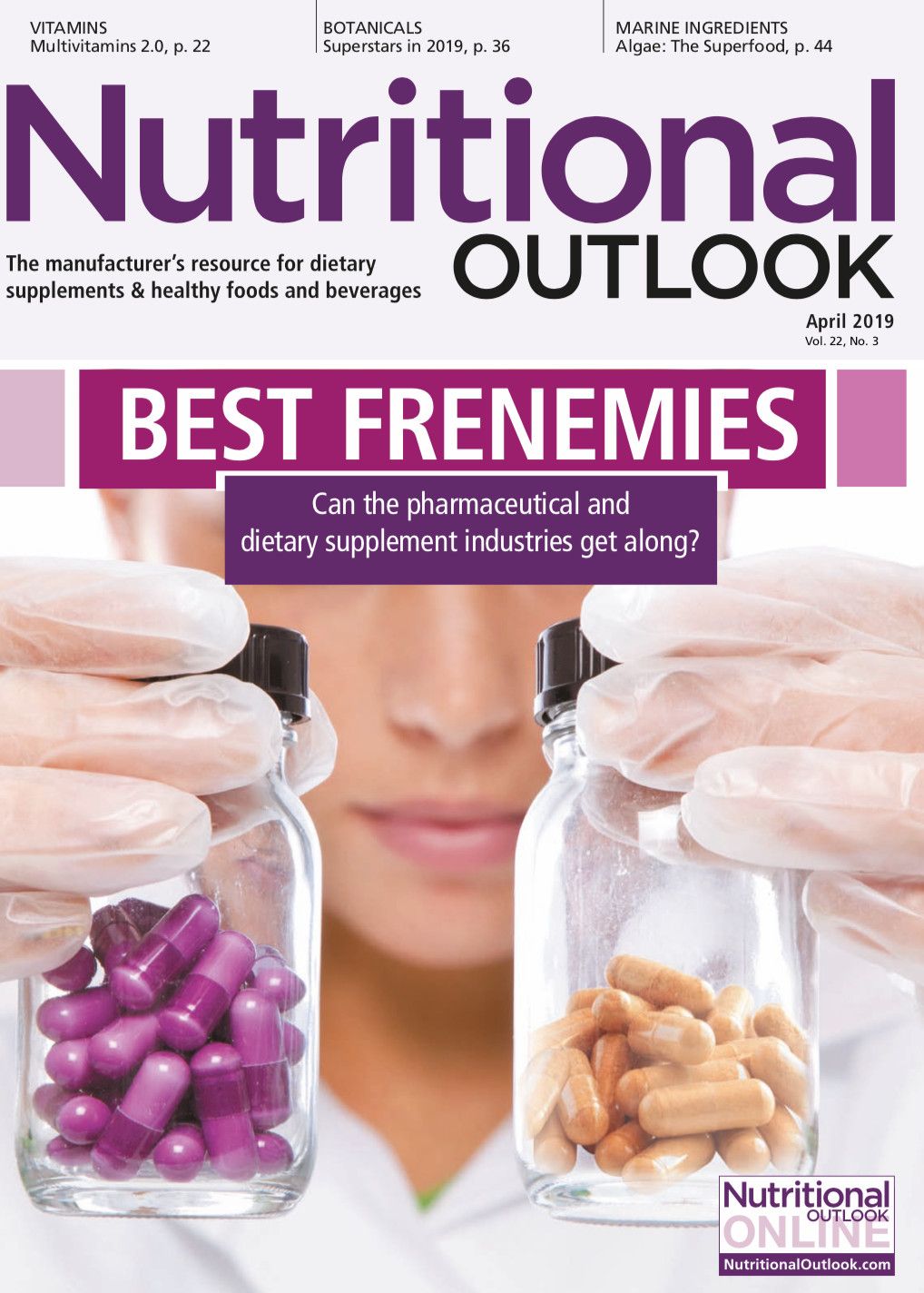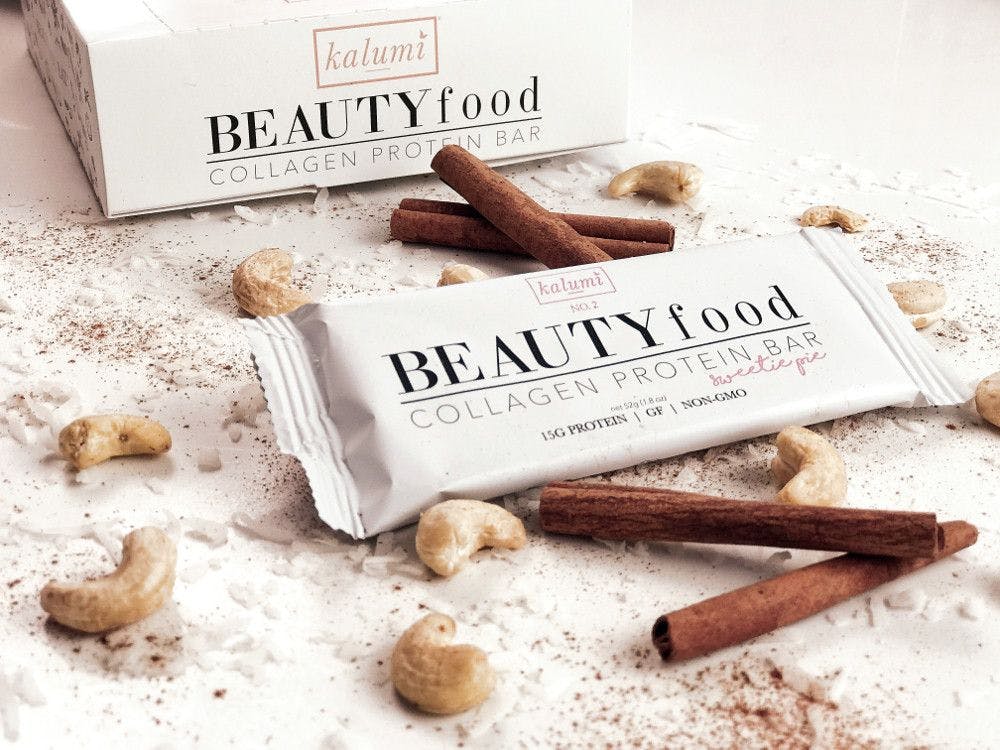Algae and nutrition: Putting the “super” in "superfood"
Algae’s valuable nutrition stores are prized in today’s human health market.
Photo courtesy of Marinova

When health advocates call algae a “superfood,” they do mean super. For one, algae have an extraordinary capacity for survival.1Algae is a broad term encompassing macroalgae and microalgae species, either freshwater or marine.)
For instance, macroalgae (also known as seaweed) “have an ancient lineage on our planet,” says Lynn Cornish, a scientist from Acadian Seaplants Ltd. (Dartmouth, Nova Scotia, Canada), a manufacturer of food and functional ingredients derived from cultivated and wild seaweeds. “They were among the first multicellular organisms, here before even the jellyfish and the dinosaurs. They have survived for millennia in all manner of challenging environments, coping at times with hot sun, high light levels, temperature extremes, ice, and hungry sea creatures.”
Algae’s ability to shield themselves from exterior antagonists has enabled many species to build up a rich store of proteins, lipids, fiber, vitamins, minerals, and more-nutrients that coincidentally are sought in today’s human health market. “Algae is at the base of the food chain, and many algae species have adapted to become extremely potent nutritionally for a variety of reasons,” says Bob Capelli, executive vice president, global marketing, for astaxanthin supplier Algae Health Sciences (AlgaeHealth; Irvine, CA), a division of BGG. “For example, Haematococcus pluvialis”-the microalgae species from which most natural astaxanthin ingredients in the human supplement market are derived today-”is an algal species that can hyper-accumulate astaxanthin as a protective force field to ward off all sorts of environmental stressors.”
Part of what makes algae so exciting a nutrition source is that it is nutritionally rich as a whole. Or Gottlib is vice president of marketing for microalgae-ingredient supplier Algatech (Kibbutz Ketura, Israel). Says Gottlib: “Unlike other plant-based foods-e.g., soy, peas, beans, etc.-where only part of the plant is consumed, microalgae biomass is a complete organism, thus containing all the components of the whole structure. It has significant amounts of proteins, lipids and phospholipids, vitamins, minerals, carotenoids, and carbohydrates, all high quality for human consumption.”
“Nutritionally,” says Cornish from Acadian Seaplants, “seaweeds typically contain all the essential nutrients required for human health and wellness, with the exception of adequate calories.”
A Growing Market
While algal ingredients are not new in the nutrition space, interest in these ingredients is growing, for several reasons.
“Consumers are turning to algae-derived ingredients more and more as we continue to see a booming demand for plant-based ingredients,” says Tryggvi Stefánsson, science manager, Algalif (Reykjanesbaer, Iceland), supplier of the Astalif astaxanthin brand.
Another reason for the interest has to do with one of the biggest challenges humans will face for centuries to come: how to sustainably feed the earth’s growing population from a planet whose feed supply is limited.
“In the face of growing shortages and strains on our resources, and the increasing demand for proteins, lipids, carbohydrates, and other valuable ingredients-especially those that are vegetarian, sustainable, environmentally friendly, and organic-it’s a given that microalgae will play a significant role in the diet of all populations during the next decade,” says Algatech’s Gottlib.
He continues: “Microalgae are on the way to becoming a leading food source of the 21st century…In fact, microalgae contain the nutritional formula for humankind to flourish over the coming decades.”
Stefánsson adds that “algae are more sustainable than conventional crops because they require significantly less energy/input to be kept alive, thereby limiting environmental impact. It is a renewable source of proteins but also high-value compounds for human nutrition, such as beta-carotene, phycocyanin, astaxanthin, EPA (eicosapentaenoic acid), and DHA (docosahexaenoic acid).”
While algae, particularly seaweeds, have a long history of use in Asian cultures for helping to address everything from inflammation, immunity, and gut health to oncology, the ability to extract and isolate specific fractions of algae has given these ingredients greater use worldwide, says Helen Fitton, PhD, chief scientist for Marinova (Cambridge, Tasmania, Australia). “The interest in seaweed-derived ingredients has significantly grown in recent years-not just in Asia but in western countries, too-as research continues to reveal the extraordinary health potential they offer.”
Health Benefits
Modern-day clinical research substantiating the human health benefits of a number of algal strains continues to grow. “There are endless species of algae, and each has unique constituents” for supporting health, says Algalif’s Stefánsson.
Immune health has long been an area of interest where algae are concerned. Marinova’s Fitton points to a study done on fucoidan. Marinova specializes in this high-purity compound, which it extracts from two species of fucoidan-rich, certified-organic macroalgae: Undaria pinnatifida and Fucus vesiculosus. Fucoidan, she explains, plays an essential role in helping seaweed protect itself from marine pathogens.
A published human study2 sponsored by Marinova on its Maritech branded fucoidan exploring the ingredient’s immunomodulatory potential found that the study’s fucoidan-supplemented subjects saw a significant increase in cytotoxic T-cell numbers and phagocytic capacity in monocytes, as well as a significant decrease in levels of the inflammatory cytokine interleukin 6, leading researchers to conclude that the fucoidan does have “potential as an immune modulator.”
Ingredient supplier Kemin (Des Moines, IA) has brought to market a new immune-health ingredient called BetaVia, derived from the algal strain Euglena gracilis. The company recently announced the results of a 90-day double-blind, placebo-controlled human clinical trial on BetaVia Complete, which is a whole-cell algae ingredient grown via fermentation and comprising more than 50% algae-sourced beta-glucans, plus protein, amino acids, and essential vitamins and minerals. The study found that compared to subjects taking a placebo, BetaVia Complete subjects experienced 70% fewer upper respiratory tract infection (URTI) symptoms, 3.3 fewer sick days, and 10 fewer URTI symptoms throughout the study. The study is currently awaiting publication. (The company also offers BetaVia Pure, a concentrated Euglena gracilis ingredient containing more than 95% algal-sourced beta-glucans.)
Josh Swalla, product manager for active wellness at Kemin Human Nutrition and Health, says, “We believe the immune supplement market is ripe with opportunity for algae. The overall immune [supplement] market is estimated to reach $25 billion in retail sales by 2025, according to Persistence Market Research.3 Providing customers with an immune-health ingredient from a unique algae source will allow their products to stand out on shelves.”
Another ingredient, InSea2, which is derived from the seaweed species Ascophyllum nodosum and Fucus vesiculosus, was shown in a newly published six-month randomized, double-blind, placebo-controlled study4 on 65 dysglycemic patients to be effective for glycemic control compared to placebo. Researchers observed that subjects taking the ingredient saw significant reductions in levels of glycated hemoglobin, fasting plasma glucose, postprandial glucose, and insulin-resistance index compared with placebo. The ingredient, combined with chromium picolinate, helped 18.2% of patients return to normal glycemic status after six months, compared to zero in the placebo group.
Sports nutrition is also a growing market. At the Natural Products Expo West trade show in March, Lonza Consumer Health & Nutrition (Morristown, NJ) introduced a new marine phytoplankton-based ingredient derived from Tetraselmis chuii that increases physiological response to oxidative stress, supporting physical performance and recovery. The ingredient, brand name Oceanix, is said to be rich in antioxidant enzymes, including superoxide dismutase (SOD), as well as essential fatty acids, vitamins, amino acids, and minerals.
“Oceanix marine phytoplankton is developed using a patent-pending process in a food cGMP facility and is cultivated on non-arable land using recycled water, helping to meet the rising demand for more sustainable, naturally derived dietary supplement products,” says Cliff Barone, global ingredient marketing, Lonza Consumer Health & Nutrition. “The Oceanix brand also meets the growing need for nutritional support for active consumers-whether weekend warriors or elite athletes-and the demand for clean-label, vegetarian products. Active consumers want active nutrition products to support performance and recovery that’s also clean-label and non-GMO, and with its vegetarian origins, the Oceanix ingredient helps to bring sports performance and wellness benefits together, appealing to a new set of consumers.”
Barone says that Oceanix has been the subject of a pilot study on 32 student athletes, which found that 25 mg of the ingredient daily significantly improved multiple biomarkers of exercise performance and recovery compared to baseline and control. “This may be attributable to the high concentration of SOD that sets Oceanix marine phytoplankton apart from other microalgae ingredients,” he says.
He adds: “Phytoplankton ingredients are gaining traction in the dietary supplements space thanks to their natural, non-GMO, and plant-based source of nutrition. This comes as consumers become increasingly informed about the products they consume, which is driving the demand for more naturally sourced products.” Oceanix is suited for various sports nutrition applications, including dietary supplements, bars, drinks, and powders.
Astaxanthin
Astaxanthin, the natural carotenoid derived from Haematococcus pluvialis, has carved out a special market for itself in the algal ingredients space. Says Algalif’s Stefánsson, “Astaxanthin protects against free radical damage; preserves healthy lipids, proteins, and DNA; and helps the human body maintain a healthy oxidative balance. As science continues to demonstrate the numerous benefits of astaxanthin, opportunities are growing in markets from beauty and self-care to sports nutrition and healthy aging.”
Skin health is one area of research interest. Last year, Algatech announced a new study5 done on a branded supplement from Fujifilm containing Algatech’s natural astaxanthin, derived from Haematococcus pluvialis. Study subjects were given the oral supplements, after which skin was irradiated in order to measure any skin changes. Nine weeks of daily astaxanthin intake resulted in a higher amount of UV exposure required to visibly redden the skin, leading the researchers to conclude that “astaxanthin seems protective against UV-induced skin deterioration and helps maintain healthy skin in healthy people.”
“Astaxanthin will not and should not replace a sunscreen cream, but it provides another layer of protection,” says Algatech’s Gottlib.
Gottlib adds: “Natural algal-sourced astaxanthin is gaining popularity thanks to the expanding evidence and clinical studies supporting its health benefits and its key role in preventing health disorders, especially those associated with inflammation and oxidative stress conditions, as well as its support of mitochondria activity and function. There is strong clinical evidence for its support of eye health, cognition, skin health, cardiovascular health, and muscle endurance and recovery.”
Last fall, astaxanthin supplier AstaReal (Nacka, Sweden) announced a new four-month study6 funded by the company’s retail brand Astavita showing that a supplement containing AstaReal natural astaxanthin, along with tocotrienol and zinc, both increased endurance and significantly improved muscle function loss in sarcopenia sufferers. (Sarcopenia is the loss of muscle mass that occurs due to aging.)
“The results of this study are incredibly exciting as they show that AstaReal can play a vital role in supporting muscle endurance, strength, and mobility, thus combatting the effects of debilitating conditions such as sarcopenia,” said Andie Long, sales and marketing manager, AstaReal Sweden, in a press release.
Meanwhile, AlgaeHealth’s Capelli points to brand new study7 on his company’s AstaZine astaxanthin, which he says is “the first of its kind.” The study, funded by AlgaeHealth, examined the effects of AstaZine astaxanthin on depression and fatigue in human subjects. The researchers found that supplemented subjects saw significant improvements in positive mood state parameters such as global mood and vigor, and in negative mood state parameters, including depression, fatigue, confusion, tension, and anger. Wrote the researchers: “While previous studies have shown [natural astaxanthin] supplementation to improve parameters associated with brain health (neuro-inflammation and cognition), these data are the first to suggest that natural astaxanthin supplementation reduces negative mood state parameters (depression and fatigue) and improves global mood state and thus supports mental wellness.”
Capelli says: “It’s preliminary to make conclusions based on this one study, but the potential implications for people on prescription antidepressants is very interesting.”
Promises such as these are what keep astaxanthin suppliers looking forward.
Algatech’s Gottlib says, “Globally, the demand for astaxanthin is expected to continue to grow at a fast pace in the years to come. Natural algal sources of astaxanthin could be called the ‘king’ of carotenoids, with studies showing it to be 500 times more effective than tocopherol vitamin E and possessing proven clinical advantages.”
“We also see more and more countries have started to seek out the benefits of astaxanthin,” he adds. “We expect that, the same as with other valuable health ingredients, astaxanthin will gain an even bigger role in the functional food industry.”
Capelli says: “The astaxanthin market has been tumultuous over the last decade, with demand growing very rapidly when many huge opinion leaders tried it, felt the benefits for themselves, then went on ‘The Dr. Oz Show’ and ‘The Oprah Winfrey Show’ and wrote The New York Times number-one-bestselling books extolling its benefits. Now, you can find it in many products outside its traditional supplement market, but supplements still comprise the large majority of the volume.”
Capelli says that following a large spike in demand for astaxanthin in 2011-2014, demand has continued to rise, “but at more reasonable levels.” He says: “We still have a long way to go in our goal to make astaxanthin a household word. Even though there’s been a lot of publicity about it over the last decade, most consumers still don’t know what it is, so there’s a lot of room for innovative brands to grow the market.”
Astaxanthin ingredient suppliers are working hard to ensure their ingredients can accommodate many types of product forms and consumer requests so that manufacturers can innovate further with astaxanthin.
Last fall, AlgaeHealth introduced a new water-dispersible emulsion of its AstaZine natural astaxanthin especially for beverages. According to the company, this new format utilizes a trademarked technology called Dispersa that “resolves two key complications common in competitive ‘water dispersible’ astaxanthin products: ineffective dispersion in water applications and residual staining of consumers’ mouths and packaging containers.” (Astaxanthin is known for its bright red color, which is often used as a colorant.) “We’ve seen competitive products claiming to be water dispersible which have sedimentation and suspended particles after mixing,” added Lixin Ding, PhD, general manager of BGG North America, AlgaeHealth’s parent company, in a press release. “Astaxanthin using Dispersa technology is completely transparent and stable over time, with no aggregation, sedimentation, or suspension of astaxanthin.” BGG says it plans to apply Dispersa to other ingredients in its line.
Algatech recently released a whole-algae powder form of its AstaPure astaxanthin-called AstaPure Arava powder-that it says meets consumer demands for a clean-label, vegan, organic, whole-food ingredient. The whole-algae powder brings “consumers the full array of benefits from the H. pluvialis algae cells as polysaccharide complex, proteins, minerals, essential fatty acids, as well as astaxanthin.” Gottlib says this kind of an ingredient meets consumer demands for “less-processed food-in the case of astaxanthin, meaning consuming it exactly as nature created it.”
Source Is Important
Marketers interested in taking advantage of the benefits of algal ingredients should keep in mind that source material is important.
For instance, says AlgaeHealth’s Capelli, “The source of astaxanthin is a key consideration, since forms other than algae-based have been show in several peer-reviewed studies to be far inferior in efficacy. As an example, algae-based astaxanthin is 20 to 90 times stronger as an antioxidant than synthetic astaxanthin produced from petrochemicals. And about half a dozen studies have shown how yeast-based and synthetic forms don’t deliver the health benefits that algae-based astaxanthin does in a variety of animals.” (Capelli was the co-author of a paper published in 2013 exploring this topic.8)
Algalif’s Stefánsson points out: “As the consumer trend towards natural, functional ingredients continues to grow, not only is the demand for algae ingredients growing, but specifically those that have proven sustainability, quality, and traceability behind them. Microalgae cultivated under controlled conditions in locations that can provide clean energy and water inputs address these demands particularly well.” Instead of cultivating algae in open ponds, for instance, Algalif utilizes a LED-illuminated indoor photobioreactor system and a three-phase cultivation process to produce the Haematococcus pluvialis used to extract its Astalif astaxanthin ingredients. The company says this process allows it to control all production parameters and prevent the presence of any contaminants. “The productivity in such a system is much higher than in open-pond systems, as the light utilization is better, evaporation is lower, and the systems can run on maximum productivity 24/7,” Stefánsson adds.
Kemin is another company using a patented fermentation process that enables the company to produce BetaVia ingredients under controlled conditions.
Warming Up
Slowly, consumers here at home are coming around to all that algae offers. “Marine-derived ingredients have been popular in Asian markets for years, but they are just beginning to gain traction in North America,” says Kemin’s Josh Swalla. “With many consumers switching to a plant-based diet, marine ingredients such as algae are becoming more accepted. The wide acceptance of spirulina shows that North American consumers are willing to try marine ingredients.”
There’s no doubt that algal ingredients will continue attracting attention in the human health market as algae becomes a popular topic all around. “Interest in algae-based ingredients has increased over the last decade for two reasons: a lot more research has emerged showing health benefits for several species of algae. In addition, there has been increased focus by some huge companies on algae for other potential uses, such as energy, which has spilled over into interest in its other benefits,” says AlgaeHealth’s Capelli. “When you’ve got Exxon Mobil running television ads about the potential to produce fuel from algae, it’s certain to increase interest in its other uses.”
Sidebar:
Marine-Derived Minerals: Lots of Room for Growth as Consumers Demand Natural Ingredients
Suppliers of marine mineral ingredients say that the origin of their ingredients results in a better-quality mineral ingredient.
Manufacturers in search of minerals that offer superior absorption might want to look seaward. Suppliers of marine mineral ingredients say that the origin of their ingredients results in a better-quality mineral ingredient.
One of those companies is CK Nutraceuticals (Oakville, ON, Canada). Michael Chernyak, the company’s president, explains why more consumers are turning to marine minerals such as the Deep Ocean Minerals ingredient his company supplies on behalf of the ingredient’s manufacturer, Pacific Deep Ocean Biotech in Taiwan. Deep Ocean Minerals is extracted from deep ocean seawater, whose mineral composition is said to mimic that of humans’, including essential minerals such as magnesium, calcium, and potassium.
“Synthetic mineral sources are generally not well absorbed,” Chernyak explains. “They can deliver high elemental mineral levels; however, the question of bioavailability should be raised. Minerals from nature tend to be better absorbed. For instance, our Deep Ocean Minerals ingredient is standardized to four macro-minerals, including magnesium, and contains over 70 naturally occurring minerals and trace elements.” These minerals and trace elements are not concentrated or isolated, he says; rather, they are left “naturally occurring and synergistic” in the ingredient.
The ocean water from which Deep Ocean Minerals is sourced-2000 feet below the ocean’s surface-is extremely pure. At those depths, the water is not contaminated by pollutants such as heavy metals. In fact, the mineral quality of the deep ocean water is superior to the quality one would achieve from surface water, the company explains.
Chernyak says his company has several published human studies demonstrating the health efficacy of Deep Ocean Minerals. Several recent studies focused on exercise recovery, including one showing that Deep Ocean Minerals water can enhance exercise recovery in terms of aerobic capacity and leg muscle power compared to plain water9 and another showing that a Deep Ocean Minerals drink helped increase cerebral hemodynamic response in subjects during exercise recovery10.
Chernyak says consumer interest in marine minerals is “beginning to develop, slowly but surely.” He says: “The marine-sourced mineral market is still quite nascent; however, there is lots of room for this trend to run. I’m encouraged to see this play out.”
Part of what will drive interest is consumers’ demand for natural ingredient sources. “Consumers are becoming more educated, more aware,” he says. “The ‘natural’ trend does not show signs of slowing, and this is where innovative natural mineral sources come into play, particularly those like Deep Ocean Minerals which are backed by clinical research.”
Another notable marine-mineral ingredient is Aquamin by Marigot Ltd. (Cork, Ireland). The Aquamin line includes marine magnesium ingredients from seawater and multimineral complex ingredients from marine plants. David O’Leary, commercial manager for Marigot, describes his company’s ingredient more fully: “Our plant-based mineral is derived from the red seaweed species Lithothamnion calcareum. Our mineral offering has been tested extensively in research across three main areas: bone, joint, and digestive health.”
O’Leary describes the sustainable process by which the Aquamin ingredient is obtained. “Plant-based, aged, non-live/calcified materials are harvested from the fjord beds in the northwest of Iceland. This is where the material is harvested under a rigorous sustainability-management program. As no live material is harvested, no damage is done to the live cover, thereby ensuring the live bed deposits of the seaweed are allowed to continue producing calcified exoskeletons uninterrupted for generations to come.”
These mineral suppliers are also looking to make their ingredients even easier for formulators to work with in an array of products. CK Nutraceuticals says that a powdered version of the liquid Deep Ocean Minerals ingredient is now available “in response to market demand for this format.”
Last year, Marigot introduced Aquamin Mg Soluble, an “instantly soluble” form of its Aquamin magnesium-rich ingredient. “Our product offering has been tailored for application in multiple delivery systems-foods, beverages, capsules/tablets,” O’Leary says. “We have focused on the ability to provide application-based solutions ranging from powders to granulated grades, soluble beverage grades, and dispersible-in-low-pH grades.”
Sidebar:
Algae for the Vegan Meat Market?
A red algae ingredient that provides the look, feel, and taste of real meat
In March, a San Diego–based startup called Triton Algae Innovations secured a “no questions” letter from FDA for a Generally Recognized as Safe (GRAS) notification for its innovative whole-cell algae powder. Derived from the red algal species Chlamydomonas reinhardtii, the ingredient can be used as a plant-based source of protein in food. It’s described as “a non-GM, plant-based algae powder rich in essential amino acids; omega-3, -6, and -9 fatty acids; vitamin A/beta-carotene; and iron; and is an excellent source of highly nutritious protein.” The ingredient is produced via fermentation.
David Schroeder, the company’s director of corporate and regulatory affairs, says this is the first C. reinhardtii ingredient to enter the food chain. He says its protein levels are higher than other plant-based proteins’, including other algae. Already, the ingredient has been tested as a culinary ingredient at several prominent San Diego restaurants and has been used in everything from pasta to cookies.
Notably, in addition to producing this whole-algal protein powder, Triton Algae Innovations is also able to produce a red version of this algae species from which non-GM heme can be produced. Heme is the iron-rich molecule naturally found in red meat and is regarded by plant food firms as a way to mimic the look, taste, and smell of real meat products. “This ability to generate the same heme found in animal meats without utilizing GMO technology is of considerable interest to plant-based meat companies interested in offering non-GMO products to consumers,” says Schroeder.
Of the whole-algal protein powder, Schroeder says, “We anticipate that as the market becomes more familiar with the ingredient, it will be incorporated into and utilized in a variety of food and nutritional end uses…Additionally, the environmental benefits of production via fermentation-smaller footprint, no arable land, minimal fresh water inputs, no use of pesticides or crop protection chemicals, etc.-provide certain competitive advantages as opposed to other plant-based proteins, which are produced via traditional agricultural methods.”
References:
- Wells ML et al. “Algae as nutritional and functional food sources: revisiting our understanding.” Journal of Applied Phycology, vol. 29, no. 2 (2017): 949-982
- Myers SP et al. “A combined Phase I and II open-label study on the immunomodulatory effects of seaweed extract nutrient complex.” Biologics, vol. 5 (2011): 45-60
- Persistence Market Research. “Global market study on immune health supplements: omega-3 fatty acids expected to be the fastest-growing ingredient type during 2017-2025.” December 2017
- Derosa G et al. “Ascophyllum nodosum and Fucus vesiculosus on glycemic status and on endothelial damage markers in dysglicemic patients.” Phytotherapy Research, vol. 33 no. 3 (March 2019): 791-797
- Kaoki I et al. “The protective role of astaxanthin for UV-induced skin deterioration in healthy people-a randomized, double-blind, placebo-controlled trial.” Nutrients. Published online ahead of print June 25, 2018.
- Liu SZ et al. “Building strength, endurance, and mobility using an astaxanthin formulation with functional training in elderly.” Journal of Cachexia, Sarcopenia, and Muscle, vol. 9, no. 5 (October 2018): 826-833
- Talbott S et al. “Astaxanthin supplementation reduces depression and fatigue in healthy subjects.” EC Nutrition. Published online February 26, 2019.
- Capelli B et al. “Synthetic astaxanthin is significantly inferior to algae-based astaxanthin as an antioxidant and may not be suitable as a human nutraceutical supplement.” Nutrafoods. Published online December 2013.
- Stasiule L et al. “Deep mineral water accelerates recovery after dehydrating aerobic exercise: a randomized, double-blind, placebo-controlled crossover study.” Journal of the International Society of Sports Nutrition. Published online June 26, 2014.
- Wei CY et al. “Deep ocean mineral supplementation enhances the cerebral hemodynamic response during exercise and decreases inflammation postexercise in men at two age levels.” Frontiers in Physiology. Published online December 12, 2017.

Prinova acquires Aplinova to further increase its footprint in Latin America
April 7th 2025Prinova has recently announced the acquisition of Brazilian ingredients distributor Aplinova, which is a provider of specialty ingredients for a range of market segments that include food, beverage, supplements, and personal care.






















